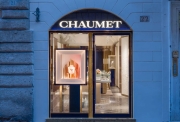Ubudu, based in Paris, is due to launch its first U.S. implementation of uBeacon Mesh, during the first part of next year.
The current standard beacons, such as the iBeacon by Apple, operate by shining a signal to advise you of your current location. These devices are usually mounted on walls or ceilings, by retailers. The beacon sends out small loads of data that send messages, such as ‘Hi, I’m here’, with limited information describing its exact store location. This message is ideal as the customer, when entering the store, will have limited GPS positioning on a smartphone. An app on the phone is able to transmit the data via a data network or Wi-Fi to its server.
For this information to be effective, the store requires expensive networks, and the beacons can only be monitored and controlled within that store.
Mesh beacons are able to convert the current beacons into two-way net-connected networks. The capabilities of mesh beacons would allow a customer standing in an aisle to relay a brief message through the smartphone app to the store, should they require assistance. It will however, be necessary for customer phones to have Bluetooth 4.0.
In both systems, coupon graphics and other components are based in the app. The uBeacons are able to receive the information, such as product info and pricing, through the mesh network and relay it to the customer. It is not necessary for the customer to have cellular data or Wi-Fi as is required with the standard beacons.
Retailers can use a third-party app or create their own. The mesh networks can be controlled through a browser-based dashboard. Ubudu provides both the beacons and the server software.
Conventional beacons transmit the same message at regular intervals, but the mesh beacons transmit messages to various devices, such as smartphones and other beacons.

 Boohoo expands online presence with new marketplace for fashion
Boohoo expands online presence with new marketplace for fashion Victoria's Secret expands presence in Melbourne
Victoria's Secret expands presence in Melbourne Inditex's Bershka set to enter indian market with Mumbai store
Inditex's Bershka set to enter indian market with Mumbai store Ross stores expands across the U.S. with 24 new locations
Ross stores expands across the U.S. with 24 new locations Chaumet opens doors to debut boutique in Italy
Chaumet opens doors to debut boutique in Italy Birkenstock is launching first store in France
Birkenstock is launching first store in France Salomon elevates brand presence with new Paris flagships
Salomon elevates brand presence with new Paris flagships  Amiri expands presence in California
Amiri expands presence in California  Crocs expands its presence in India with Apparel Group
Crocs expands its presence in India with Apparel Group  Best Buy Canada to expand presence with 167 small-format locations
Best Buy Canada to expand presence with 167 small-format locations  Arket expands into Italy with Milan flagship
Arket expands into Italy with Milan flagship